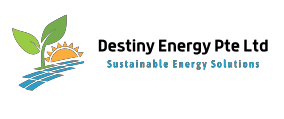microgrid solutions
Destiny Energy (“Destiny”) proposes to develop, own and operate Microgrids with integrating various types of Distributed Energy Resources (DERs) under a “Microgrids as a Service (MaaS)” business model. Essentially, Destiny and its partner(s) will own the microgrid (and all its associated technologies like solar PV, wind, batteries and generators like hydrogen fuel cells, diesel generators etc) while the customer just pays for energy via contract. The benefit from this is that the customer is able to get all the benefits of on-site stable, resilient, and sustainable power generation without investing in distributed energy technologies themselves.
Destiny proposes to integrate new and emerging technologies like Hydrogen Fuel Cells and Green Hydrogen on-site Production, where feasible along with the traditional DER resources like solar, wind (vertical axis wind turbines), battery storage and diesel generators.
The advancements in the Fuel Cell technology is transforming the traditional approach to further bring down the carbon emissions by replacing the diesel. The new Micro-Grid solutions architecture would consist of:
- Green Hydrogen / Green Ammonia
- Hydrogen Fuel Cell
The Green Hydrogen production on-site could be backward coupled to (1) solar and wind using Water Electrolysis, which are intermittent sources in nature and (2) bio-gas using Methane Pyrolysis.
This on-site produced Green Hydrogen is used to produce a steady electricity through the Hydrogen Fuel Cells. This solution architecture eliminates the deployment of costly battery storage capex and the diesel opex. However, in the absence of no solar or wind resources to produce Hydrogen on site, the Fuel Cells could be fired on Green Ammonia brought to the site. The storage and transportation of Ammonia is very well established for decades.
